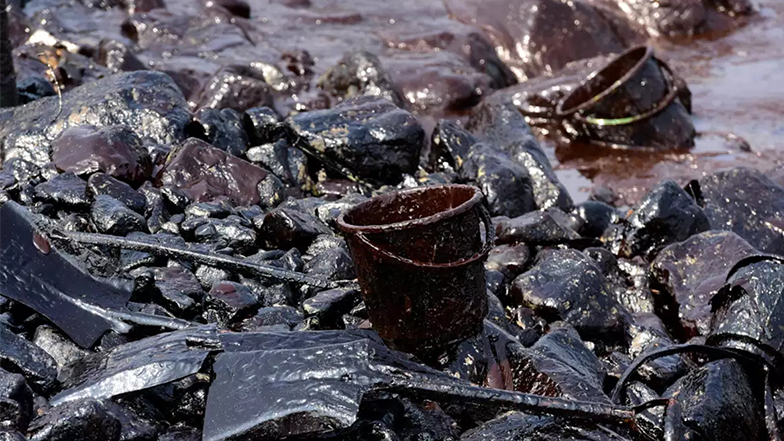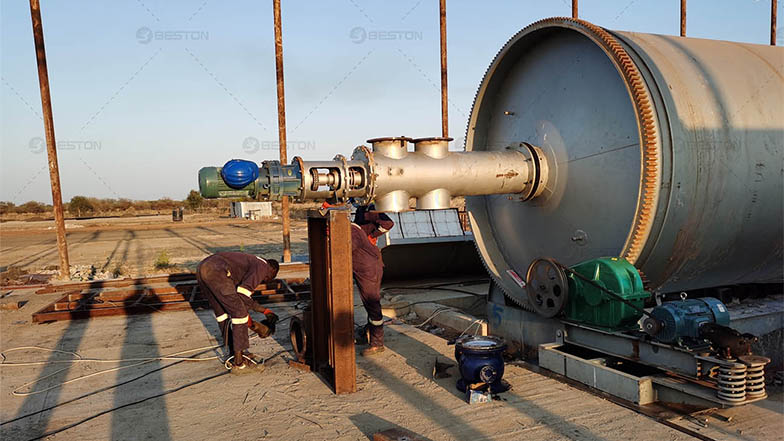Oil sludge, a byproduct of petroleum refining and oil extraction, poses significant environmental challenges due to its composition of hydrocarbons, heavy metals, and other hazardous substances. Effective management and recycling of oil sludge are critical to mitigating its environmental impact. This article delves into two prominent oil sludge recycling solutions: incineration and thermal desorption, analyzing their processes, advantages, and disadvantages.

Incineration: A Traditional Approach
Incineration involves the combustion of organic substances contained in oil sludge. This process converts the waste into ash, flue gas, and heat. Incineration is widely adopted due to its ability to reduce the volume of waste substantially and to neutralize hazardous components through high-temperature oxidation.
Process Overview
During incineration, oil sludge is subjected to temperatures ranging between 850°C and 1200°C. The process typically occurs in a specially designed furnace where oxygen supply is controlled to ensure complete combustion. The resulting ash is collected for disposal or potential recovery of metals, while flue gases are treated to remove pollutants before being released into the atmosphere.
Advantages
- Significant volume reduction of oil sludge, often by more than 90%.
- Destruction of hazardous organic compounds, including polychlorinated biphenyls (PCBs) and dioxins.
- Potential for energy recovery, which can be utilized to generate electricity or heat.
Disadvantages
- High operational costs due to energy requirements and emission control systems.
- Generation of toxic flue gases necessitating advanced air pollution control technologies.
- Production of residual ash that requires proper disposal or further treatment.
Thermal Desorption: An Innovative Technique
Thermal desorption is an advanced recycling technique that involves the heating of oil sludge to volatilize and separate contaminants without combusting the material. This method utilizes a thermal desorption unit (also called oil sludge pyrolysis plant) to achieve efficient separation of hydrocarbons from the sludge.
Process Overview
In a thermal desorption unit, oil sludge is heated to temperatures typically between 250°C and 550°C under an inert atmosphere. The volatilized contaminants are then condensed and collected for further treatment or reuse. The remaining solid residue, which contains reduced levels of contaminants, can often be disposed of more safely or used as a secondary material.
Advantages
- Non-destructive process that preserves the calorific value of hydrocarbons, allowing for their recovery and reuse.
- Lower temperatures compared to incineration, resulting in reduced energy consumption and lower emissions.
- Flexibility in treating a wide range of contaminants, including volatile organic compounds (VOCs) and semi-volatile organic compounds (SVOCs).
Disadvantages
- Initial capital investment for thermal desorption units can be substantial.
- Requires subsequent treatment of recovered contaminants to ensure environmental compliance.
- Potential issues with handling and disposing of the treated residue, depending on its composition.
Comparative Analysis
When comparing incineration and thermal desorption unit, several factors must be considered, including environmental impact, cost-effectiveness, and operational efficiency. Both methods have their merits and limitations, and the choice between them often depends on specific project requirements and regulatory frameworks.
Environmental Impact
Incineration, while effective in reducing waste volume and destroying hazardous compounds, generates significant emissions that require stringent controls. The production of ash also presents disposal challenges. Conversely, thermal desorption generates fewer emissions and allows for the recovery of valuable hydrocarbons. However, it requires careful handling of volatilized contaminants and treated residues.
Cost-Effectiveness
Incineration involves high operational costs due to energy demands and emission control technologies. Thermal desorption, although requiring significant initial investment, can offer cost savings in the long term through the recovery of reusable hydrocarbons and lower energy consumption. The economic viability of each method can vary based on the scale of operation and local economic conditions. Want a cost-effective oil sludge recycling solution? Please consult Beston Group Co., Ltd.
Operational Efficiency
Incineration is a straightforward and well-established technology with a track record of reliability. It can handle large volumes of waste and is less sensitive to variations in waste composition. Thermal desorption, on the other hand, offers a more nuanced approach that can be tailored to specific contaminants, but it requires more sophisticated operational management to optimize performance and ensure compliance with environmental standards.

Future Prospects
As environmental regulations become increasingly stringent and the demand for sustainable waste management solutions grows, both incineration and pyrolysis system are likely to evolve. Innovations aimed at improving energy efficiency, reducing emissions, and enhancing the recovery of valuable materials will shape the future landscape of oil sludge recycling.
Emerging technologies such as plasma gasification and supercritical water oxidation may also complement or even replace traditional incineration and thermal desorption methods. These advanced processes offer the potential for even higher efficiency and lower environmental impact, providing new avenues for the effective management of oil sludge.
Conclusion
The choice between incineration and thermal desorption for oil sludge recycling depends on a complex interplay of factors, including environmental impact, cost, and operational considerations. Incineration offers a robust and proven solution for large-scale waste reduction and energy recovery, albeit with higher emissions and operational costs. Thermal desorption provides a more environmentally friendly alternative with potential for material recovery, but it requires significant initial investment and careful management.
Ultimately, the selection of an appropriate recycling method must be guided by a comprehensive assessment of the specific context and objectives of the waste management program. As technology advances and new innovations emerge, the future of oil sludge recycling holds promise for more efficient, sustainable, and environmentally responsible solutions.